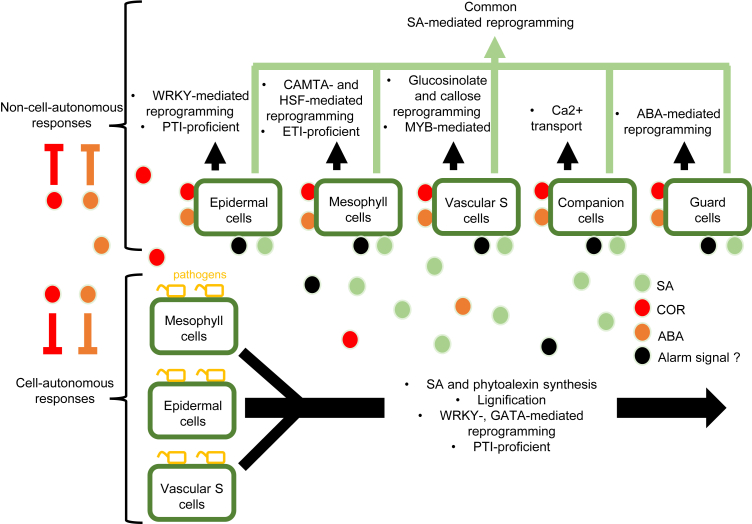Plant defense responses involve multiple biological processes that enable plants to resist pathogenic attack. But how these different processes are coordinated within the organ and whether they depend on specific cell types is unclear.
On August 28, 2023, Plant Communications published online a research paper titled "Cell specialization and coordination in Arabidopsis leaves upon pathogenic attack revealed by scRNA-seq" by Julien Lang's laboratory at the Institute of Plant Sciences of the University of Paris-Saclay in France. Using single-cell sequencing technology, researchers found that when infected by pathogenic bacteria, different cell types in Arabidopsis leaves can undergo general and specific gene reprogramming mediated by selective transcriptional regulators, thereby activating the same or different immune responses.
The researchers first prepared protoplasts from Arabidopsis leaves sprayed with pathogenic bacteria (Pst) , and then divided them into 18 cell groups through single-cell sequencing. Using tissue-specific marker genes and up-regulated expression gene sets in cell groups, researchers divided these cell groups into different groups such as vascular bundles, guard cells, mesophyll cells, and whether they were infected by pathogenic bacteria, thus identifying several different groups of cell groups related to immune responses.
The authors then analyzed in detail the gene expression differences between healthy cells and cells infected by pathogenic bacteria in different groups, and found that the expression of immune-related genes in infected cells was higher than that in healthy cells, but there are differences in the expression of immune-related receptor genes (PRRs and NLRs) in epidermal cells and mesophyll cells, indicating that they may respond to pathogenic bacterial infection through different immune responses.
In addition, the author also analyzed the possible cell fate differentiation pathways of different cell groups after pathogenic infection, as well as the cell type-specific transcriptional responses to pathogenic infection, and proposed several new hypotheses about the specific response of different cell types to pathogenic infection.

Finally, the author also found that the same SA and JA-ABA antagonistic signals exist among different groups of cells, indicating that pathogenic and antagonistic processes can coexist in all cells infected by pathogenic bacteria, and summarizes the transcriptional defense processes in response to pathogenic bacterial infection at the cell type level.
Reference:
Delannoy, E., et al. Cell specialization and coordination in Arabidopsis leaves upon pathogenic attack revealed by scRNA-seq. Plant Commun. 2023, 4(5): 100676.